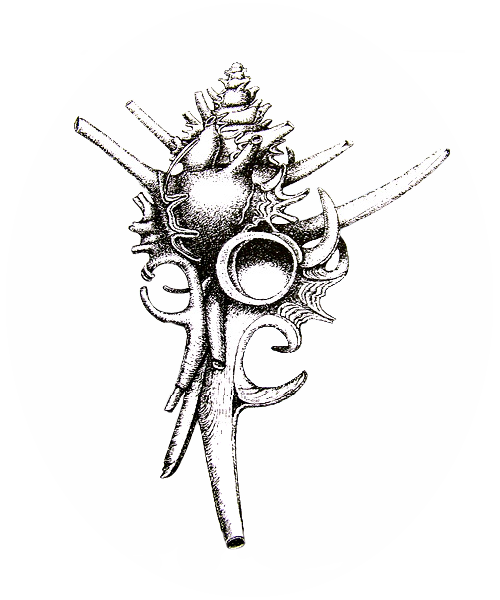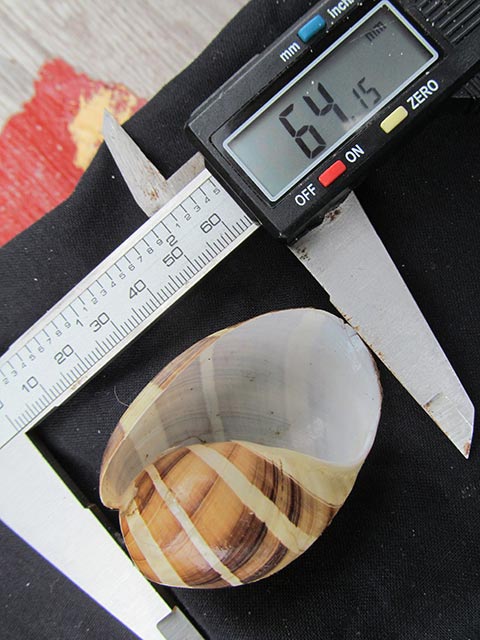Measurements should be reported in millimeters to the nearest tenth (0.1 mm). Specimens submitted for entry as world records must exceed the
current records by a minimum of three tenths of a millimeter (0.3 mm). This standard was established by Wagner and Abbott in the past to
compensate for factors which may cause unavoidable variances in measurement, such as calipers used, measuring technique, and other distorting
factors. The Registry of World Record Size Shells will continue to follow this standard.
In all cases, a ruler or, for greater precision, a digital caliper is the preferred tool. Measurements are typically taken to the nearest
millimeter or 0.1 cm.
The method for measuring a seashell size depends on whether it is a gastropod (snail-like, single shell) or a bivalve (clam-like, two hinged shells).
-
Gastropod Shells (Single, Coiled Shells) (the primary measurement for most coiled shells is Shell Length (or Height)):
-
Shell Length / Shell Height: This is the maximum dimension measured from the apex (the pointed, oldest tip of the spire)
to the furthest point at the opposite end, usually the tip of the siphonal canal (the "tail" end).
For scientific or "World Record" purposes, it is generally considered the "longest dimension" of the shell.
-
Shell Width: This is the maximum width of the shell, measured perpendicular to the shell central axis (the line used for
the length measurement). This is usually measured across the body whorl (the largest spiral section).
-
Aperture Size: This is the measurement of the shell opening. For hermit crab owners, this is the most critical measurement.
It is typically the maximum width of the aperture opening.
-
Bivalve Shells (like clams, oysters, and scallops are measured along three axes):
-
Shell Length: The maximum distance measured along the antero-posterior axis (from the front to the back of the shell). This
is the longest dimension of the two valves joined together.
-
Shell Height: The maximum distance measured along the dorso-ventral axis (from the hinge, or dorsal side, to the bottom edge,
or ventral side), perpendicular to the length.
-
Shell Width: The maximum distance measured across the shell on the lateral axis (the distance between the two closed valves).
-
For scientific and ecological studies, other measurements may be taken:
-
Lip Thickness: The thickness of the material around the opening (aperture),
-
Shell Weight: Measured using a precise scale,
-
Shell Volume: This is a more complex measurement, often estimated by filling the empty shell cavity with water or fine sand and measuring the
volume displacement,
-
Whorl Count: The number of full revolutions the coil of the shell makes.
Note that for WRS-shells only the largest or smallest dimension of a shell is taken.
Submissions on wrs-shells.com which do not show proof of verification will NOT be published in the Registry of World Record Size Shells.
All entries must be verified either by a professional malacologist, a reputable shell dealer, or an advanced collector who is recognized as a
specialist in the applicable family, with their contact information. We might contact persons serving as the verifying party to re-confirm
submissions for whatever reason.


